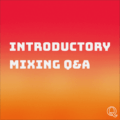A CV is one of the most important elements in your professional profile. Getting it right will take many revisions, a lot of research, and a bit of trial and error, but will pay off in separating a good candidate from a great one (you!) in the hiring process. Here are some top tips for creating a killer resume that will get you the job or the gig you want.
A good CV should…
Address the skills and qualifications in the job posting
Your CV should be tailored to showcase your most relevant skills and experience to the job that you are applying for. Use the job description as a guide for crafting your CV in a way that speaks to their needs (while reflecting your true skills).
Be concise and organized
The average time a hiring manager will look at a CV is three seconds. With this in mind, it is beneficial to keep your resume concise and formatted for easy reading. It is recommended to keep it to two pages maximum, without overcrowding the space on your pages. A font size between 10-11, depending on the font you choose, is generally acceptable.
Be written in the third person
An example of this is: “Responsible for coordinating the logistics for a monthly fundraiser, hosting over 200 attendees from across Canada”. Again, consistency is key. Keep an eye out for your sentence structure, and feel free to ask someone to review your CV for you.
Formatting your Resume
Personal Information
Include a header with your name and contact information at the top of the page, making your name a slightly larger font size so that an employer will see it and be more likely to remember it.
Profile
A brief section called a “Profile” is used to outline who you are, what you have to offer and your ambitions, and should be a maximum of four sentences.
Work Experience
Any valuable and relevant work experience that you want to highlight will be featured reverse-chronologically in this section, starting with the most recent. Be sure to include the job title, the city you were located in, and 3-4 bullet points that concisely describe your responsibilities and biggest accomplishments.
Education
If you prefer to highlight your education, as it is most relevant to the job, you can put your Education section ahead of your Work Experience. Highlight your high school and post-secondary education along with any other courses or certifications that you received, including the date of graduation and the city in which it was located.
Skills
Any skills that are relevant to the job can be highlighted in this section in bullet form, starting with those that are most closely related to the job.
Activities
This portion of the CV allows the employer to get to know you as an individual. This section could include volunteer experiences, personal interests, or recreational hobbies like hiking or volunteering at a local youth centre.
Language
Include spoken languages and the level of proficiency, such as Fluent/Native, Advanced, or Intermediate.
What not to include
Distracting Fonts & Colours
Don’t use distracting colours or fonts – make it easy for the employer to read or print your CV.
Your References
While it’s good to already have your references vetted and collected beforehand, you do not need to include them on your CV. The reference check is the last part of the hiring process. Unless otherwise requested in the job posting, leave out your references on your CV to save space.
—Final notes—
Get feedback
Whenever possible, get feedback from hiring managers, mentors, peers, and other industry professionals on how your résumé can be improved – your friends and family are likely not the most qualified candidates to get technical advice for your industry.
It’s important to be aware that in some cases, having a solid resume is a critical first step, but depending on the job and the company, you may need to provide a portfolio. Taking on a more holistic approach to your professional profile is a good safeguard for landing that dream opportunity. Ensure that your online presence and your CV showcase your talent in the best possible way while eliminating any barriers that might turn off an employer (like distracting colours and fonts on your CV).






















